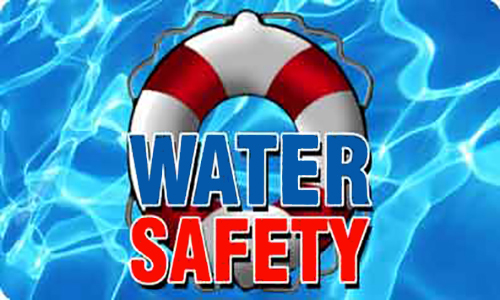Drownings do not typically occur as dramatized on television. Drownings occur quickly and in many cases, the drowning itself is not actually witnessed. The victim is there one minute and gone the next. Life jackets are an important part of drowning prevention, whether boating or simply swimming from the shoreline or a dock. It is imperative for children to be instilled with the habit of wearing a life jacket whenever they are around the water. State law requires children under seven to wear a life jacket while on a watercraft, but that is only a minimum requirement. Life jackets clearly benefit persons of all ages.
It is common for teens and even adults to overestimate their swimming ability, so even if a person chooses not to wear a life jacket, keeping a life jacket or another adequate flotation within reach is imperative. It is difficult to judge distance on the water, so what appears to be a short swim across a pond, lake, or river may actually be further than you think. The current on rivers may also extend your swim beyond your abilities. Panicking is a key component of drowning. The best way to avoid panic is to be prepared around the water. Once the struggle to stay afloat begins, it may be too late to retrieve a flotation device. Clearly, the best practice is to wear a life jacket.
As we get into what is typically the hottest weather of the year, help ensure you don’t become a drowning victim. Make sure you and your loved ones are prepared when they hit the water.
- Swim in designated areas supervised by lifeguards.
- Always swim with a buddy; do not allow anyone to swim alone. Even at a public pool or a lifeguarded beach, use the buddy system!
- Ensure that everyone in the family learns to swim well. Enroll in age-appropriate Red Cross water orientation and Learn-to-Swim courses.
- Never leave a young child unattended near water and do not trust a child’s life to another child; teach children to always ask permission to go near the water.
- Have young children or inexperienced swimmers wear U.S. Coast Guard-approved life jackets around water, but do not rely on life jackets alone.
- Establish rules for your family and enforce them without fail. For example, set limits based on each person’s ability, do not let anyone play around drains and suction fittings, and do not allow swimmers to hyperventilate before swimming under water or have breath-holding contests.
- Even if you do not plan on swimming, be cautious around natural bodies of water including ocean shoreline, rivers, and lakes. Cold temperatures, currents, and underwater hazards can make a fall into these bodies of water dangerous.
- If you go boating, wear a life jacket! Most boating fatalities occur from drowning.
- Avoid alcohol use. Alcohol impairs judgment, balance and coordination; affects swimming and diving skills; and reduces the body’s ability to stay warm.
Prevent Unsupervised Access to the Water
- Install and use barriers around your home pool or hot tub. Safety covers and pool alarms should be added as additional layers of protection.
- Ensure those pool barriers enclose the entire pool area, are at least 4-feet high with gates that are self-closing, self-latching and open outward, and away from the pool. The latch should be high enough to be out of a small child’s reach.
- If you have an above-ground or inflatable pool, remove access ladders and secure the safety cover whenever the pool is not in use.
- Remove any structures that provide access to the pool, such as outdoor furniture, climbable trees, decorative walls and playground equipment.
- Keep toys that are not in use away from the pool and out of sight. Toys can attract young children to the pool.
Maintain Constant Supervision
- Actively supervise kids whenever around the water—even if lifeguards are present. Do not just drop your kids off at the public pool or leave them at the beach—designate a responsible adult to supervise.
- Always stay within arm’s reach of young children and avoid distractions when supervising children around water.
Know What to Do in an Emergency. If a child is missing, check the water first. Seconds count in preventing death or disability.
- Know how and when to call 9-1-1 or the local emergency number.
- If you own a home pool or hot tub, have appropriate equipment, such as reaching or throwing equipment, a cell phone, life jackets and a first aid kit.
- Enroll in Red Cross home pool safety, water safety, first aid and CPR/AED courses to learn how to prevent and respond to emergencies.







